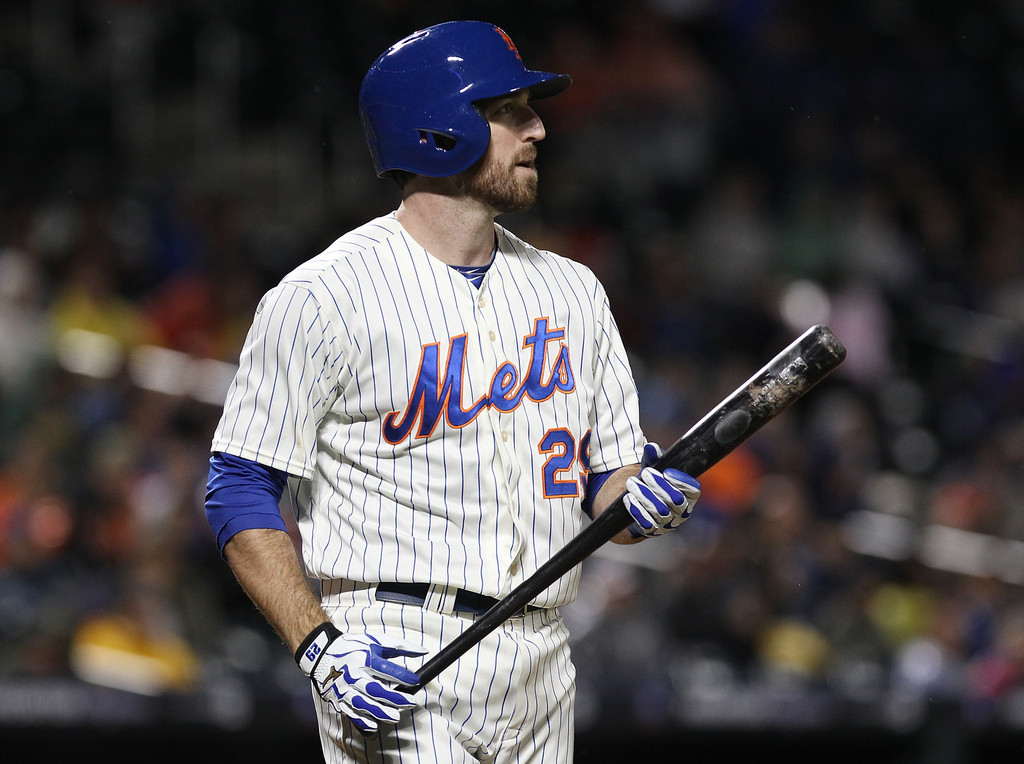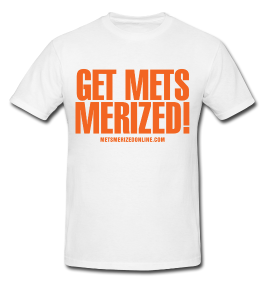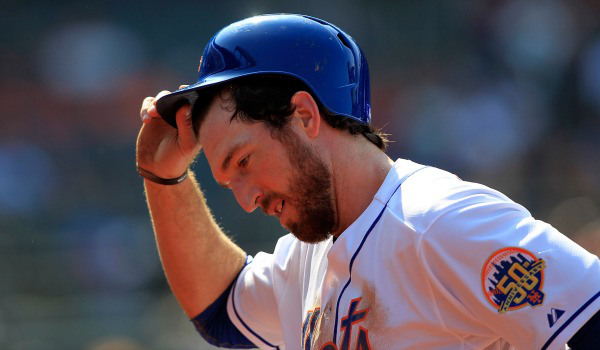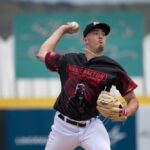 Outside of third base, there aren’t a lot of positions on the Mets that one could consider truly “locked up,” but first base is one that many felt had had a flag planted by Ike Davis by the end of last season. True, this would have been an assumption primarily based on 1 ½ seasons of decent play at the big league level, but players who have produced 30+ home run seasons along with an elite level of defense have been few and far between in club history. When one appears in the form of a first round draft pick who seems to be following a predictable course of development, the natural inclination is to pencil that player in for the next several seasons, at least. Now, in the face of two consecutive years characterized by lengthy and untenable dry spells, the team is now forced to look ahead to the option of non-tendering Ike if he fails to rebound sufficiently during the second half. Considering the very real possibility of this happening, what strategy should the Mets employ in finding a replacement?
Outside of third base, there aren’t a lot of positions on the Mets that one could consider truly “locked up,” but first base is one that many felt had had a flag planted by Ike Davis by the end of last season. True, this would have been an assumption primarily based on 1 ½ seasons of decent play at the big league level, but players who have produced 30+ home run seasons along with an elite level of defense have been few and far between in club history. When one appears in the form of a first round draft pick who seems to be following a predictable course of development, the natural inclination is to pencil that player in for the next several seasons, at least. Now, in the face of two consecutive years characterized by lengthy and untenable dry spells, the team is now forced to look ahead to the option of non-tendering Ike if he fails to rebound sufficiently during the second half. Considering the very real possibility of this happening, what strategy should the Mets employ in finding a replacement?
IN HOUSE: There appears to be at least a few reasonable options if the team decides to go with players who are already part of the organization. At the major league level, the pending return of Lucas Duda will create a bit of a logjam now that left field has effectively been ceded to Eric Young. If Davis is not offered a contract by the team, Duda would be his logical replacement, either full time or as part of a platoon with Josh Satin. At AAA, it would appear that Wilmer Flores’ bat should earn him a shot at one of the slots on the right side of the infield, something that may have an impact on Daniel Murphy’s future as well. At the AA level, Allan Dykstra’s offensive emergence will probably ticket him as heir apparent to the first base slot in Las Vegas, but he will likely earn a spring training invite and at least get a chance to show if his apparent blossoming is for real.
FREE AGENT MARKET: The group of upcoming free agent first sackers (as presently comprised) is a mixed bag of mostly older spare parts or stars past their prime (Todd Helton, Eric Hinske, Xavier Nady, Paul Konerko, Lyle Overbay, Carlos Pena, Kevin Youkilis) mixed in with a group of 30-ish types of varying talent levels who could provide some intriguing alternatives (Corey Hart, Mike Napoli, Casey Kotchman, Adam Lind, James Loney, Kendrys Morales, Justin Morneau, Mike Morse, Mark Reynolds). Of this group, Hart, Loney, Kotchman, and Morneau can all acquit themselves well in the field while the rest are best regarded as DH candidates. Hart, despite missing this season with a knee injury, projects as a steady25-30 HR type who can also cover a corner outfield position if needed. He will be 32 at the start of next season but with the right deal could be a decent choice to plug the gap during the next 4-5 years. Loney and Kotchman have been primarily regarded as good glovemen (who both seem to hit well in a Tampa Bay uniform), but don’t stand out as the kind of productive bat the Mets need to add. Morneau has had great years in the past, but is brittle and appears to be on the downside of his career.
The trade market always remains a possibility but there are no obvious fits here. Unless a fire sale of the type that netted Carlos Delgado from the Marlins ahead of the 2006 campaign happens, I wouldn’t expect the team to be able to import an established slugger via this route. If the long-term answer is expected to come in the form of recent draft pick Dominic Smith, the Mets will still need to fill the likely four-year span until his arrival with an eye toward competing well before that happens.
As a team that plays in what still must be considered a “pitcher friendly” park even after recent renovations, the Mets can certainly follow a model of an earlier, successful incarnation, that of the ’86 champions. That team, of course, featured Keith Hernandez at first, a fine hitter but certainly not the kind of prototypical masher that most envisioned manning his position. Yet he figured as a central force on two championship teams and won an MVP while finishing in the top 20 of that award’s voting on six other occasions, all without ever hitting more than 18 home runs in any given season. The key to his success lay in his ability to hit in the clutch but especially in his ability to get on base, as evidenced in the nine seasons in which he played at least 100 games and walked more than he struck out and in his lifetime OBP of .384.
While the Mets do not have anyone who projects as a Keith clone waiting in the wings (who does?) many of the organization’s first base candidates mentioned before profile in some ways as sharing some similarities, at least from an offensive standpoint. Duda, Satin, and Flores have all been lauded for their ability to get on base, and Dykstra flaunts a gaudy OBP of .462 as of this writing (albeit in AA). While none of these players project to be the overall defensive/offensive package that Hernandez was, they may yet surprise with what they can bring to a lineup. We have already seen an uptick in the team’s run production over the past month thanks in part to changes at leadoff (Young) and the contributions of Josh Satin.
The situation at first for the Mets will continue to evolve during the balance of this season, into the offseason, and may not be resolved until the end of 2014’s spring training. I’m sure we will all be watching with interest.















